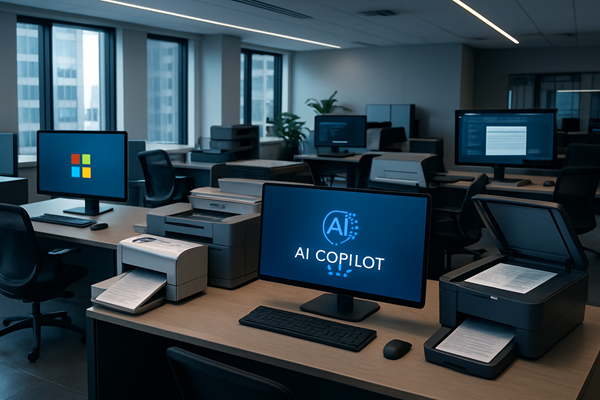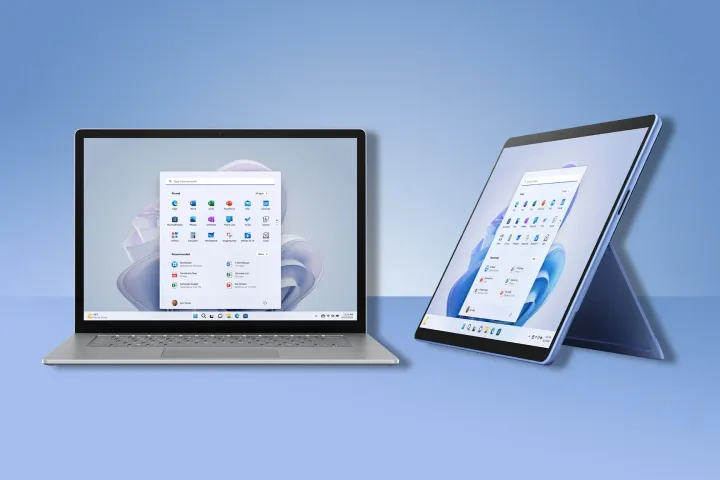2025 SMB Tech Refresh: What Aussie small businesses need to know about PCs, software & security

With support for Windows 10 ending on October 14, 2025, many small and mid‑sized businesses (SMBs) are weighing when—and how—to refresh devices, modernise servers, and tighten security. Microsoft is urging organisations to move to Windows 11 devices (including the new Copilot+ PCs) or consider Windows 365 cloud PCs, with Extended Security Updates as a stopgap only. At the same time, Microsoft executives are signalling a near‑term future centred on multimodal AI workflows and secure, cloud‑managed Windows devices—an inflection point that makes 2025 a pivotal year to upgrade.
Why the 2025 PC refresh matters: AI PCs, battery life and choice
Copilot+ PCs bring on‑device NPUs (neural processing units) and “all‑day” battery gains, led by Qualcomm’s Snapdragon X platforms (X Elite/X Plus) now widely available across vendors—positioned to make AI features practical for everyday business tasks without hammering performance or battery.
In Australia, OEMs like Dell are promoting Copilot+ lines (e.g., XPS 13, Latitude 7455) with business SKUs and local fulfilment, underscoring enterprise manageability alongside the AI pitch.
For budget‑sensitive buyers, CES 2025 introduced a lower‑cost Snapdragon X tier aimed at sub‑USD$600 systems—useful for fleet rollouts and frontline scenarios.
Not all workloads are a natural fit for Windows‑on‑ARM today, so it’s helpful that Intel’s Lunar Lake (Core Ultra 200V) also landed with major efficiency and NPU improvements for thin‑and‑light laptops, giving SMBs strong x86 options with long battery life. Early independent testing shows standout endurance (e.g., XPS 13 non‑OLED variants), with caveats around OLED panels—nuance your procurement criteria accordingly.
Server‑side security: Windows Server 2025 raises the bar
f you still run local file servers or mixed hybrid workloads, Windows Server 2025 is generally available and ships with hardened defaults and new SMB protections—like SMB signing required by default, NTLM blocking options, and rate limiting on failed authentications—to blunt relay and brute‑force attacks. Microsoft’s own guidance highlights these changes as part of its Secure Future Initiative; for admins, the upshot is safer file services with less manual hardening. In practice, enabling SMB over QUIC can also secure remote access to file shares without exposing legacy VPN edges—worth prioritising for distributed teams.
Productivity suites: watch the licensing & AI shifts
On premises server products (SharePoint Server, Exchange Server, Skype for Business Server) see price increases in July/August 2025—10% for standalone server licences and 15–20% for CAL suites—nudging organisations toward cloud‑delivered Microsoft 365 where feasible.
Meanwhile, Google Workspace folded Gemini AI capabilities into core Business/Enterprise plans with a modest per‑user price rise; importantly, small‑business customers were initially exempt from the increase, though timing and eligibility nuances matter by region and contract. For SMBs juggling both ecosystems (common in Australia), this is a good moment to re‑benchmark per‑user cost, AI value, and admin overhead before renewing.
Cybersecurity reality check for Australian SMBs
The Australian Cyber Security Centre (ACSC) continues to report high volumes of cybercrime affecting businesses of all sizes, with SMBs often targeted via email compromise and ransomware. Its Annual Cyber Threat Report 2023–24 details the threat landscape and points to practical mitigations SMBs can adopt immediately. ACSC’s Small Business resources package practical steps—MFA, patching, secure backups, and vendor risk hygiene—that align well with Essential Eight‑style controls and are realistic for smaller teams to execute. If you’re unsure where to start, ACSC’s (older but still relevant) Small Business Survey highlights the common pain points: lack of dedicated security staff, tooling complexity, and overconfidence without tested incident plans—useful context for prioritising managed services.
Patch prudently: August updates and Recall/AI features
August’s cumulative updates advanced Windows 11 builds and introduced AI component improvements for 24H2, but not without hiccups—some enterprises saw WSUS/SCCM install failures (0x80240069), prompting Microsoft to push an emergency rollback policy. On the server side, remember that Monthly Rollups (e.g., KB5063950 for 2012 R2) often require current Servicing Stack Updates; sequencing matters in lab/maintenance windows. If you’re beginning pilots of newer AI/Recall experiences, expect region gating and feature toggles to evolve with servicing; keep change control tight until your core line‑of‑business apps are validated.
Not just Windows: macOS Sequoia (Apple Intelligence) in business
Apple’s macOS 15 Sequoia adds enterprise‑specific improvements (enrolment, update management, SSO resilience) and continues rolling out Apple Intelligence on Apple Silicon Macs, with MDM controls to restrict or tune AI features where required. In January 2025, Apple enabled Apple Intelligence by default on supported Macs (15.3), and university IT guidance recommended policy‑based controls (Jamf/Intune) for managed fleets—sensible advice for SMBs that handle sensitive data.
What this means for SMB decision‑makers
- Prioritise Windows 10 remediation. Inventory which devices should: a) move to Windows 11 (ideally Copilot+ PCs for longevity), b) be extended via ESU temporarily, or c) be retired. Build the business case around risk reduction and AI‑productivity gains, not just OS compliance.
- Choose the right silicon for the job. Where battery life and on‑device AI matter (field sales, exec travel), Snapdragon X Copilot+ PCs shine; where niche apps or peripherals demand x86, Lunar Lake‑based laptops are proving efficient with solid NPUs.
- Harden your file services. If you still run on‑prem storage, Windows Server 2025 plus SMB over QUIC gives a measurable security step‑up—especially for remote access.
- Re‑assess SaaS licensing. Factor 2025 on‑prem price rises and Workspace/Gemini bundling into your 12–24‑month TCO; standardise where possible to cut admin complexity.
- Adopt ACSC‑aligned basics. MFA everywhere, patch fast (with testing), protect mail, and keep tested offline/immutable backups—these remain the highest‑ROI controls for SMBs.
How PCP can help
PCP supplies business‑class hardware across major brands and can bundle lifecycle services (imaging, deployment, warranty, and secure disposal) to simplify your refresh. See our internal range positioning in PCP - Hardware for how we map devices to SMB use‑cases; we can align that catalogue to Co-pilot+ and Lunar Lake options and include finance‑friendly staging.
If you’d like, we’ll also run a quick audit of your server posture (including Windows Server 2025 readiness, SMB over QUIC feasibility) and your Microsoft 365/Workspace licensing mix, then present a one‑page action plan and quote.



